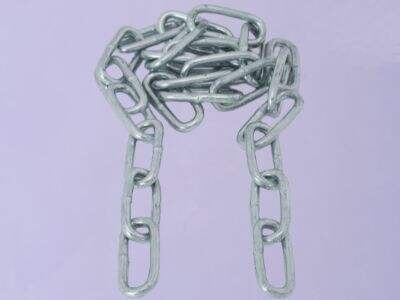Categories of surface treatment
There are a whole pile of treatments to which binder chain can be subjected to make them better. Both have the pros and cons so make sure you know it, before choosing. Here are a few typical finish processes appropriate to chains:
Galvanization
Black Oxide
Powder Coating
Nickel Plating
Galvanization is the coating of chain in a thin layer of zinc. It is this added extra layer that prevents the chain from rusting and getting damaged by the weather. Chains, for instance, can be made to hold up their strength, and not fail for a long period, if they are galvanized. This is helpful particularly for chains that are used outdoors where they are exposed to rain, snow, and light.
The other alternative is called Black Oxide. This process darkens the chain and also rust-proof. This is the most popular option for chains going outside or for those people who want to have eyes on chains within a very short period of time. Chains look great and cleaned as well in black color.
The process of applying a special kind of powder to the chain is known as powder coating. This application powder melts upon heating and forms an attractive finish over the chain.
Nickel Plating is the type of coated chain where nickel layer is coated on the surface of the anchor chain. A protective layer, with which the chain becomes resistant to its wear and tear occurred over time. In heavy-duty applications such as construction equipment and other strong machinery — which require a lot of wear and tear and have a long service life — nickel plated chains are very commonly used.
Selecting an Optimal Surface Treatment
Selecting the proper surface treatment for your chains is critical to keep them rolling properly and ensure a long service life. When deciding which treatment to use, there are several important factors to consider. Consider Where The Chains Will Be Used First Will they be used indoors or outdoors? Are they going to be out in the rain or snow?
The next thing to consider is on what type of machines will be used with the chains. In some machines, chains only require some type of chain, while others may demand a certain surface treatment. Lastly, consider what chains are made of. Chains can be made from a variety of materials, and what they are made of could determine how they should be treated.
So you might require a chain that will get wet outside galvanisation could be the best option as it safeguards from rust. Powder coating might be the right choice if you desire some aesthetically pleasing chain coupled with a smooth finish before adhering the final coat.
More About Surface Treatments
The most common method for protecting chains is Galvanization, which gives excellent rust protection. Galvanization involves covering the surface of the chain with a layer of zinc. This layer acts as a barrier between moisture and the metal. It prevents moisture from coming into contact with the metal, thereby preventing rust and corrosion. Galvanized chains are commonly used in outdoor applications such as fencing, gates, and gardening equipment.
Black Oxide is another good choice for chains. This is a process which coats a layer of black oxide on the surface of the chain to give an excellent fine black color to it. It also offers the same treatment that further makes the chain resistant to rust. Black oxide is frequently used for chains meant for aggressive outdoor conditions or in settings wherein visibility is not an issue, such as factories or workshops.
These facilitate rust-resistance, damage-resistance, and wear-resistance of the chain. It can help improve the longevity of the chain and know your chain continues to run smoothly over time.
When choosing a surface treatment for your chains, it is important to consider where they are going to be used, what machines they will go into, and the material they are made from. Choosing the right one will also ensure that your chains get the job done and will last for a very long time.

